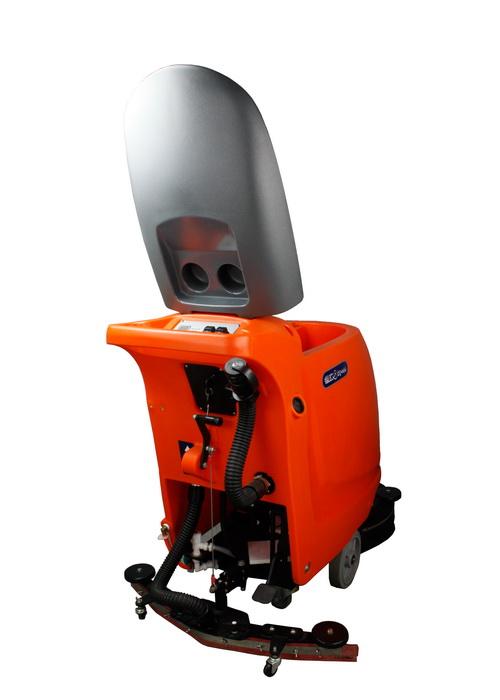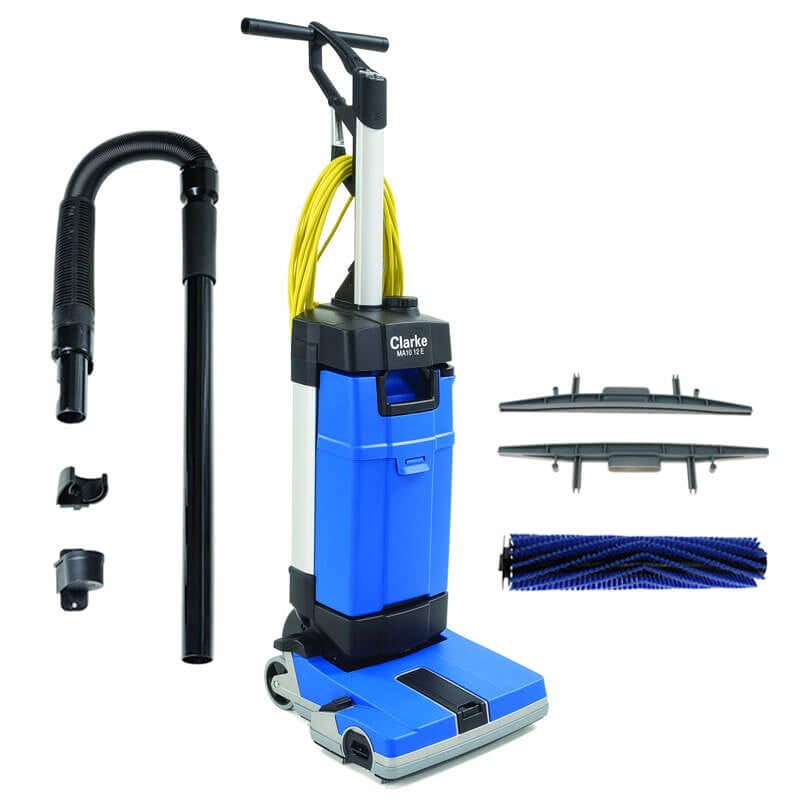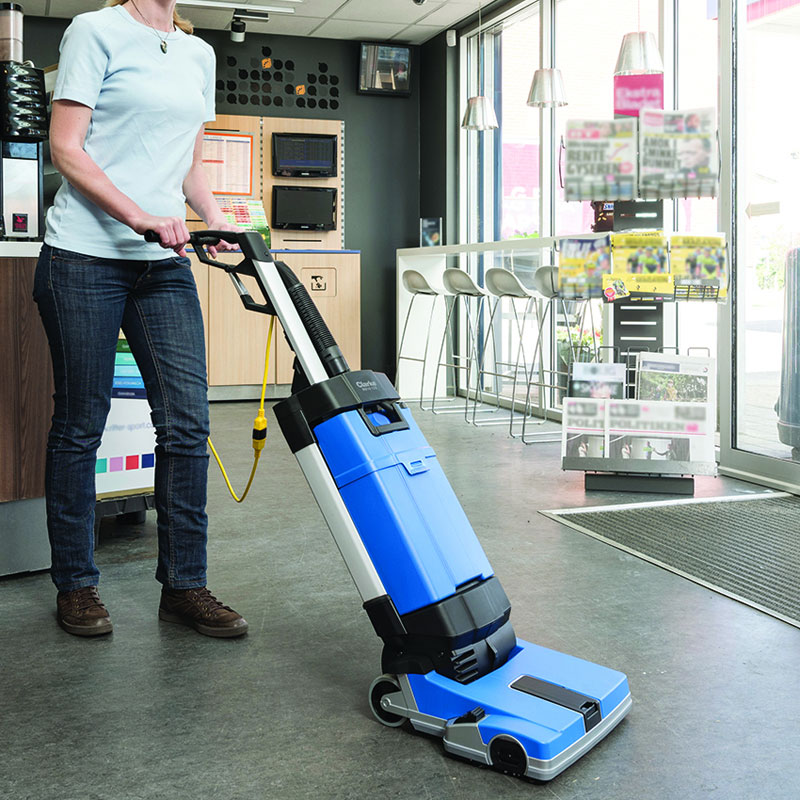Automatic tile floor cleaners have revolutionized the way we maintain our homes and commercial spaces. These innovative devices, also known as robotic floor cleaners or robot mops, offer a convenient and efficient solution for keeping tile floors spotless with minimal human intervention. As technology continues to advance, automatic tile floor cleaners are becoming more sophisticated, offering features that cater to a variety of cleaning needs. We will find out the types, benefits, features, and considerations when choosing an automatic tile floor cleaner, as well as maintenance tips and common mistakes to avoid.
Types of Automatic Tile Floor Cleaners
Robot Vacuums
Robot vacuums are one of the most popular types of automatic floor cleaners. These devices are equipped with brushes and suction capabilities to remove dust, dirt, and debris from tile floors. They are designed to navigate around furniture and obstacles using sensors and mapping technology. Many modern robot vacuums also feature wet mopping functions, making them versatile for both dry and wet cleaning tasks.
Robot Mops
Robot mops are specifically designed for wet cleaning tasks. These devices come with water tanks and mop pads to scrub and mop tile floors effectively. Some robot mops also have dual functionality, allowing them to switch between vacuuming and mopping modes. They are ideal for homes with extensive tile flooring that requires regular mopping to maintain cleanliness and shine.
Hybrid Robots
Hybrid robots combine the functions of both robot vacuums and robot mops. These devices can switch between vacuuming and mopping modes, providing a comprehensive cleaning solution. Hybrid robots are equipped with advanced navigation systems, allowing them to clean efficiently without missing any spots. They are perfect for households that need both dry and wet cleaning capabilities.
Self-Emptying Robots
Self-emptying robots are a recent advancement in the field of automatic floor cleaners. These devices come with a base station that automatically empties the dustbin of the robot vacuum, reducing the need for frequent manual emptying. This feature is particularly beneficial for those with busy lifestyles or large homes, as it enhances the convenience and efficiency of the cleaning process.
UV-C Sanitizing Robots
UV-C sanitizing robots are equipped with ultraviolet light to kill bacteria and viruses on tile floors. These robots use UV-C light technology, which has been proven to be effective in sanitizing surfaces. They are especially useful in homes with pets or children, where hygiene is a top priority. The combination of cleaning and sanitizing capabilities makes these robots a valuable addition to any home.
Window and Wall Cleaning Robots
Although not specifically designed for floors, window and wall cleaning robots can also be used to clean tile walls in bathrooms and kitchens. These robots adhere to vertical surfaces and use suction and cleaning pads to scrub and clean tiles. They are ideal for maintaining the cleanliness of tiled surfaces in areas that are difficult to reach manually.

Benefits of Using Automatic Tile Floor Cleaners
Convenience and Time-Saving
One of the primary benefits of automatic tile floor cleaners is the convenience they offer. These devices operate autonomously, allowing users to set cleaning schedules and forget about the chore of floor cleaning. This feature is especially valuable for busy households and individuals who want to save time on routine cleaning tasks.
Consistent Cleaning Performance
Automatic tile floor cleaners provide consistent cleaning performance. Unlike manual cleaning, which can vary based on effort and technique, robotic cleaners follow programmed patterns and settings to ensure thorough and uniform cleaning. This consistency leads to better maintenance of tile floors and helps in preserving their appearance and longevity.
Advanced Navigation and Mapping
Modern automatic tile floor cleaners are equipped with advanced navigation and mapping technologies. These features allow the robots to navigate around obstacles, avoid falling down stairs, and create efficient cleaning paths. Mapping capabilities enable the devices to remember the layout of rooms, ensuring comprehensive coverage and preventing missed spots.
Multi-Surface Compatibility
Many automatic tile floor cleaners are designed to work on multiple surfaces, including tile, hardwood, laminate, and carpets. This versatility makes them a valuable investment for homes with different types of flooring. The ability to adapt to various surfaces ensures that all areas of the home are kept clean with minimal effort.
Allergy and Pet-Friendly
Automatic tile floor cleaners are beneficial for households with allergies or pets. These devices can effectively remove pet hair, dander, and allergens from tile floors, improving indoor air quality. Some models come with HEPA filters that capture fine dust particles, making them ideal for individuals with respiratory issues or sensitivities.
Smart Home Integration
Many automatic tile floor cleaners are compatible with smart home systems, allowing users to control and monitor the devices through smartphone apps or voice commands. This integration enhances the convenience of using robotic cleaners and provides users with real-time updates on cleaning progress and maintenance needs. Smart home compatibility is a significant advantage for tech-savvy homeowners.
Features to Consider When Choosing an Automatic Tile Floor Cleaner
Cleaning Modes and Functions
When selecting an automatic tile floor cleaner, it is essential to consider the available cleaning modes and functions. Some devices offer multiple cleaning modes, such as spot cleaning, edge cleaning, and whole-room cleaning. Additionally, hybrid models that combine vacuuming and mopping functions provide comprehensive cleaning solutions for tile floors.
Battery Life and Charging
Battery life is a crucial factor to consider, especially for larger homes. Longer battery life ensures that the device can clean extensive areas without needing frequent recharges. Self-charging capabilities, where the robot returns to its charging dock automatically, are also a valuable feature that enhances the convenience and efficiency of the cleaning process.
Navigation and Mapping Technology
Advanced navigation and mapping technology is essential for efficient and effective cleaning. Look for models equipped with LIDAR, camera-based navigation, or advanced sensors that allow the robot to map the layout of your home and create optimal cleaning paths. These features help avoid obstacles, prevent the robot from getting stuck, and ensure comprehensive coverage.
Dustbin and Water Tank Capacity
The capacity of the dustbin and water tank is another important consideration. Larger dustbins reduce the frequency of emptying, while larger water tanks allow for longer mopping sessions without needing a refill. Self-emptying models are particularly convenient, as they reduce the need for manual intervention and enhance the overall cleaning experience.
Noise Levels
Noise levels are an important consideration, especially if you plan to run the automatic tile floor cleaner while you are at home. Quieter models are more pleasant to have running in the background and are less likely to disturb daily activities or sleep. Checking the decibel rating of a robot cleaner can help you choose a model that suits your noise tolerance.
Connectivity and Smart Features
Connectivity features, such as Wi-Fi compatibility and smartphone app control, enhance the usability and convenience of automatic tile floor cleaners. Smart features may include scheduling, remote control, real-time notifications, and integration with virtual assistants like Amazon Alexa or Google Assistant. These features allow you to manage and monitor the cleaning process easily.
Maintenance and Care
Regular Cleaning of Brushes and Filters
To maintain optimal performance, it is important to regularly clean the brushes and filters of your automatic tile floor cleaner. Brushes can become entangled with hair and debris, reducing their effectiveness. Filters should be cleaned or replaced periodically to ensure efficient suction and prevent clogs. Following the manufacturer’s guidelines for maintenance is essential.
Emptying the Dustbin and Water Tank
Emptying the dustbin and water tank after each cleaning session is crucial for maintaining the performance of your automatic tile floor cleaner. Leaving the dustbin full can affect suction power, while a full water tank can lead to leaks or damage. Regularly emptying and cleaning these components ensures the device operates efficiently and prolongs its lifespan.
Checking for Wear and Tear
Inspecting your automatic tile floor cleaner for signs of wear and tear is important for preventing breakdowns and ensuring longevity. Check for loose or damaged parts, worn brushes, and any other components that may need replacement. Addressing these issues promptly helps maintain the device’s performance and prevents more significant problems from developing.
Software Updates
Manufacturers often release software updates to improve the functionality and performance of automatic tile floor cleaners. Regularly checking for and installing these updates ensures that your device has the latest features and bug fixes. Software updates can enhance navigation, battery life, and overall cleaning efficiency.
Storage and Charging
Proper storage and charging are important for maintaining the battery life and overall condition of your automatic tile floor cleaner. Store the device in a dry, cool place when not in use, and ensure it is fully charged before storing for extended periods. Regular use and proper charging habits help prolong the battery life and maintain the device’s performance.
Professional Maintenance
While regular maintenance can be performed by homeowners, professional maintenance may be necessary for more complex issues or deep cleaning. Some manufacturers offer professional servicing to address mechanical or software problems, ensuring the longevity and performance of your automatic tile floor cleaner. Professional maintenance can help resolve issues that are beyond basic troubleshooting.
Common Mistakes to Avoid
Neglecting Regular Maintenance
One common mistake is neglecting regular maintenance tasks, such as cleaning brushes, filters, and sensors. Failing to maintain these components can lead to reduced performance and potential malfunctions. Regular maintenance is essential for ensuring the longevity and efficiency of your automatic tile floor cleaner.
Overlooking Compatibility with Floor Types
Another mistake is not considering the compatibility of the automatic tile floor cleaner with different floor types. Some devices may not be suitable for certain surfaces, such as high-pile carpets or delicate hardwood floors. It is important to choose a model that is designed for your specific flooring needs to avoid damage and ensure effective cleaning.
Ignoring Navigation and Mapping Features
Ignoring the importance of advanced navigation and mapping features can result in inefficient cleaning and missed spots. Choosing a model with basic navigation capabilities may lead to the robot getting stuck or failing to cover the entire area. Investing in a device with advanced navigation technology ensures comprehensive and efficient cleaning.
Using Incorrect Cleaning Solutions
Using incorrect cleaning solutions for the mopping function can damage the water tank and the robot’s internal components. It is important to use only the recommended cleaning solutions or plain water for mopping. Harsh chemicals or unsuitable cleaners can cause corrosion and affect the performance of the device.
Not Emptying the Dustbin and Water Tank
Allowing the dustbin and water tank to remain full can lead to reduced suction power, leaks, and potential damage to the device. Regularly emptying and cleaning these components is crucial for maintaining optimal performance. Neglecting this task can result in inefficient cleaning and potential malfunctions.
Failing to Update Software
Failing to update the software of your automatic tile floor cleaner can prevent you from accessing the latest features and improvements. Software updates often include enhancements to navigation, battery life, and overall performance. Regularly checking for and installing updates ensures your device operates at its best.
How do automatic tile floor cleaners work?
Automatic tile floor cleaners use sensors, brushes, and suction mechanisms to clean floors autonomously. They are equipped with navigation systems that allow them to map the layout of a room, avoid obstacles, and create efficient cleaning paths. Some models also include mopping functions, using water tanks and mop pads to scrub and mop tile floors.
Are automatic tile floor cleaners effective on all types of tile?
Most automatic tile floor cleaners are designed to work on various types of tile, including ceramic, porcelain, and stone. However, it is important to check the manufacturer’s specifications to ensure compatibility with your specific tile type. Some delicate or textured tiles may require special consideration when choosing a robotic cleaner.
How often should I run my automatic tile floor cleaner?
The frequency of use depends on factors such as foot traffic, the presence of pets, and personal preferences. For households with high traffic or pets, running the cleaner daily or several times a week is recommended. For lower traffic areas, weekly use may be sufficient. Setting a regular cleaning schedule helps maintain cleanliness and prevents the buildup of dirt and debris.
Can automatic tile floor cleaners handle pet hair?
Yes, many automatic tile floor cleaners are designed to handle pet hair effectively. Models with strong suction power, tangle-free brushes, and HEPA filters are particularly suitable for homes with pets. Regular maintenance, such as cleaning the brushes and emptying the dustbin, is important to ensure the device continues to perform well with pet hair.
Do automatic tile floor cleaners require supervision?
Automatic tile floor cleaners are designed to operate with minimal supervision. However, it is advisable to supervise the initial cleaning sessions to ensure the device navigates the space effectively and does not encounter any issues. Once you are confident in its performance, the cleaner can be left to operate independently.
What should I do if my automatic tile floor cleaner gets stuck?
If your automatic tile floor cleaner gets stuck, it is important to turn off the device and manually remove any obstacles. Check for any entangled debris or objects that may be obstructing the brushes or wheels. Regularly inspecting the cleaning area and removing potential hazards can help prevent the cleaner from getting stuck in the future.
Related Posts:










